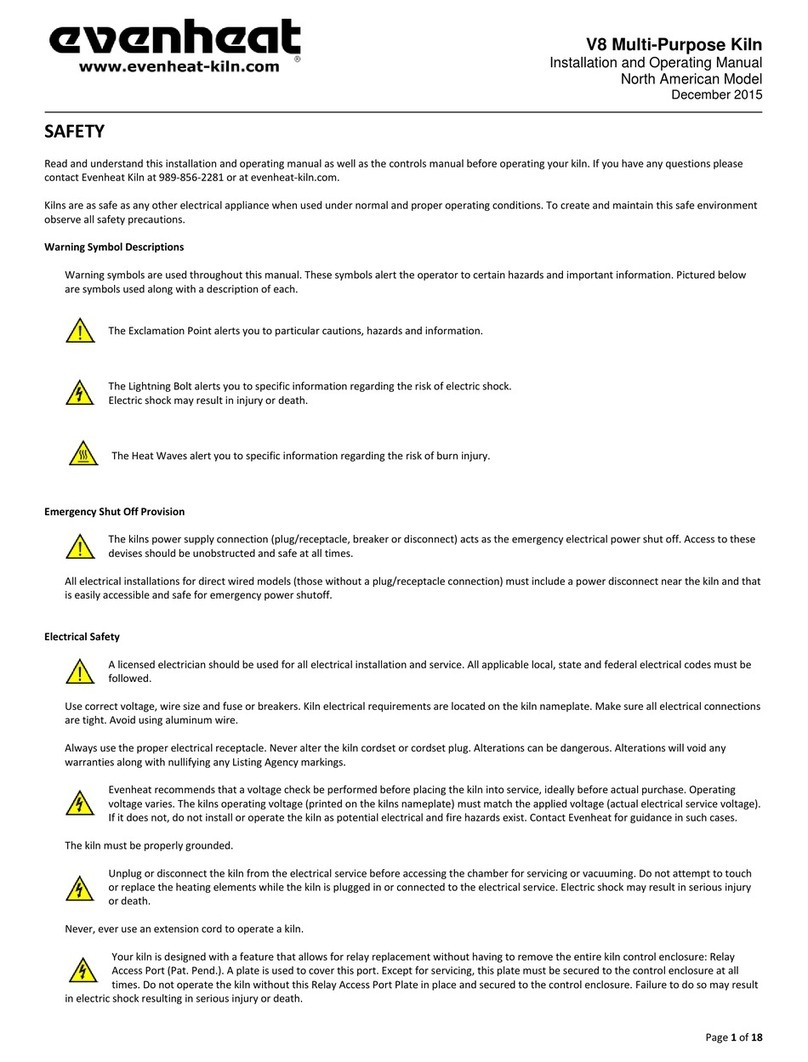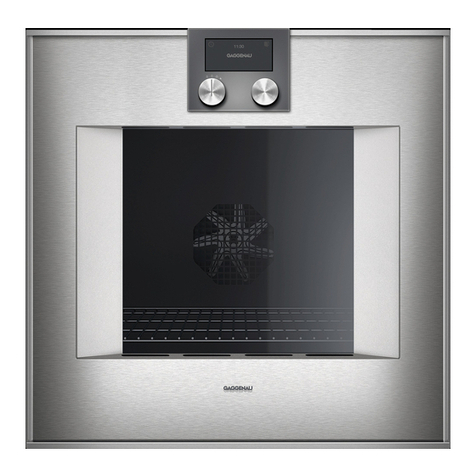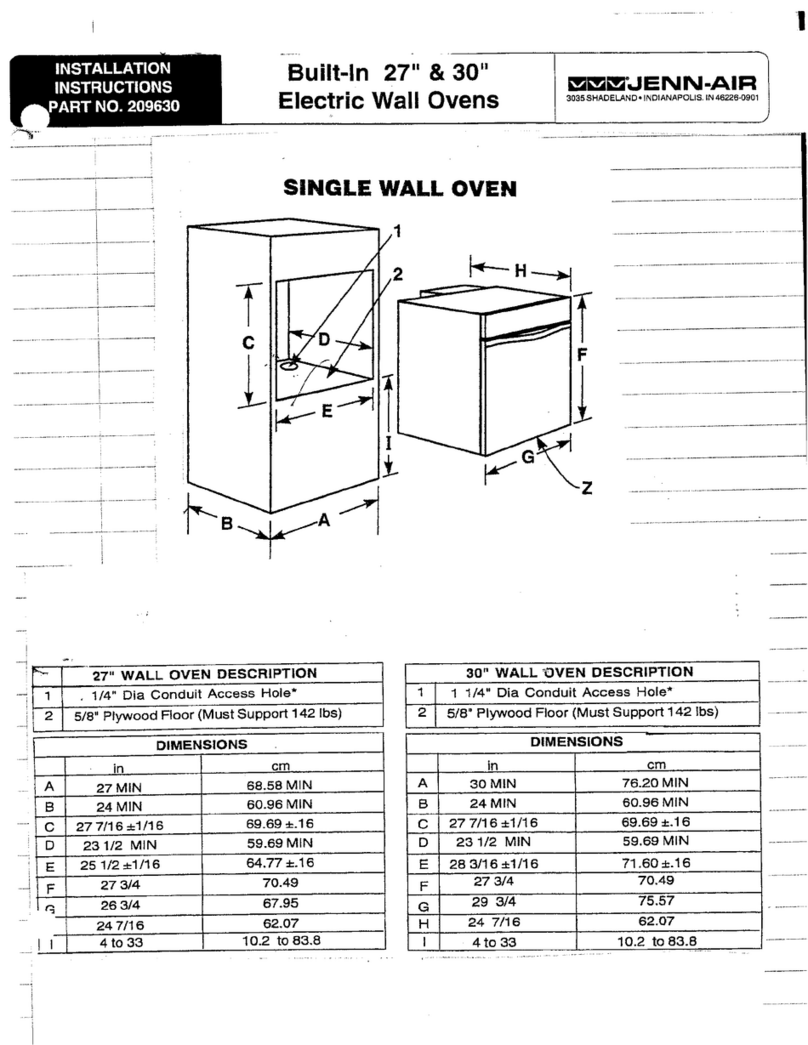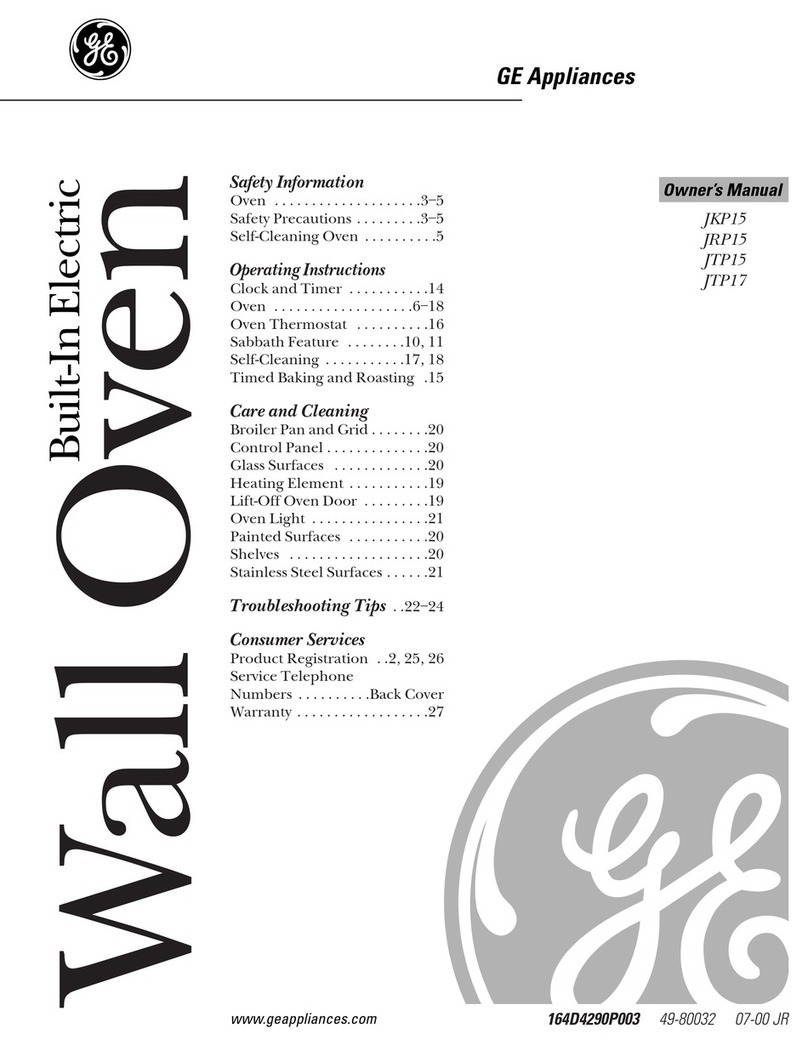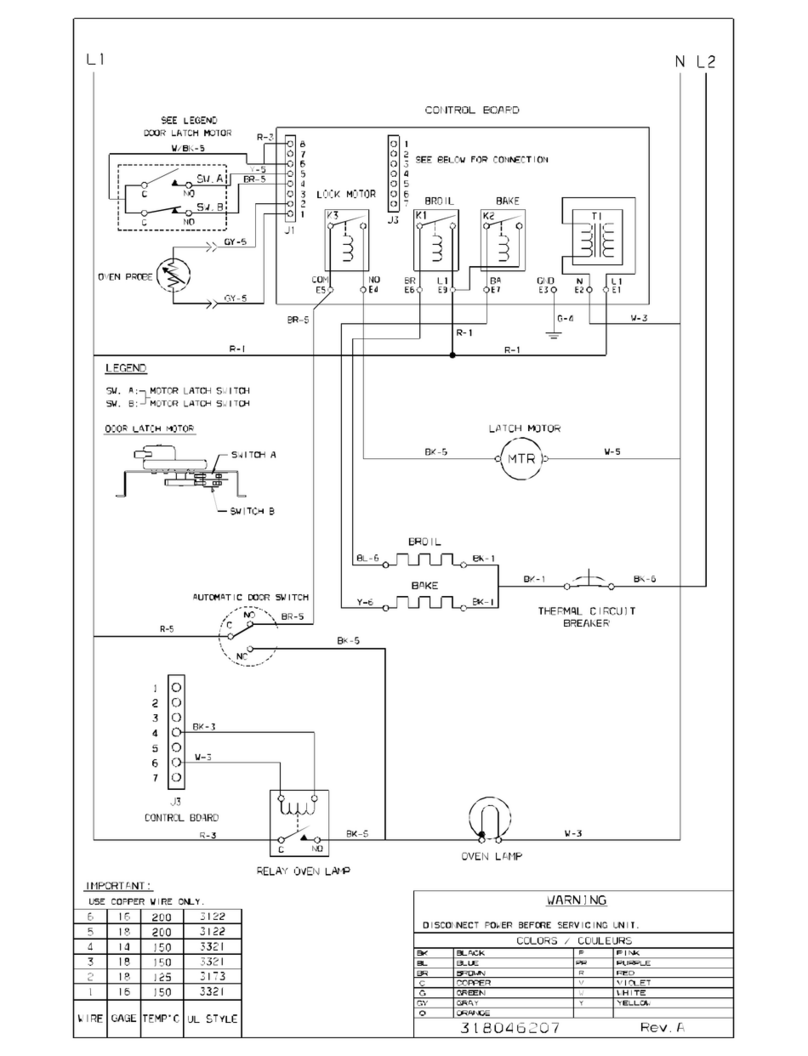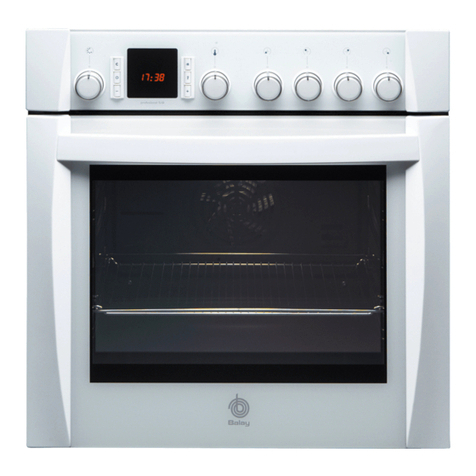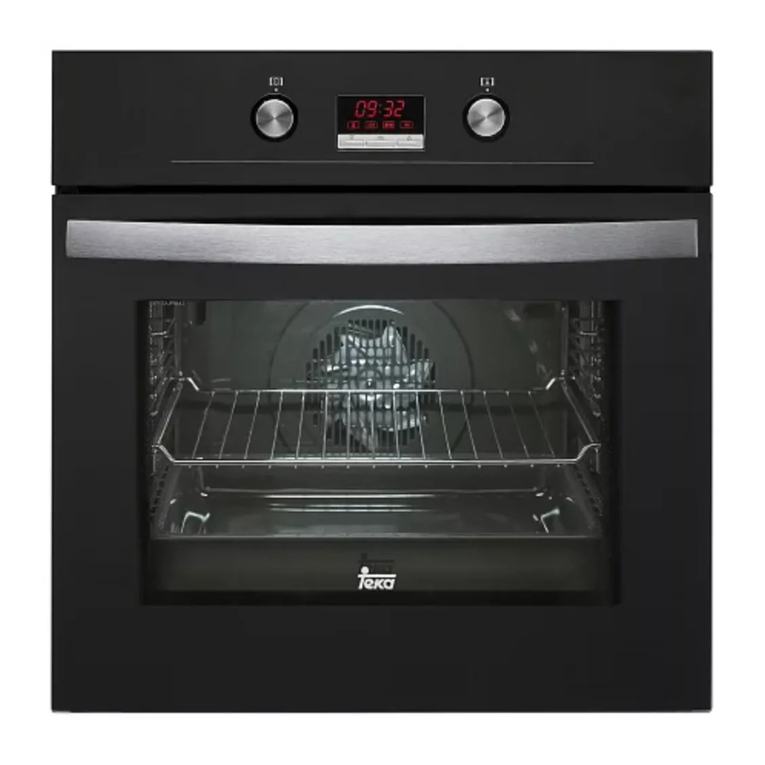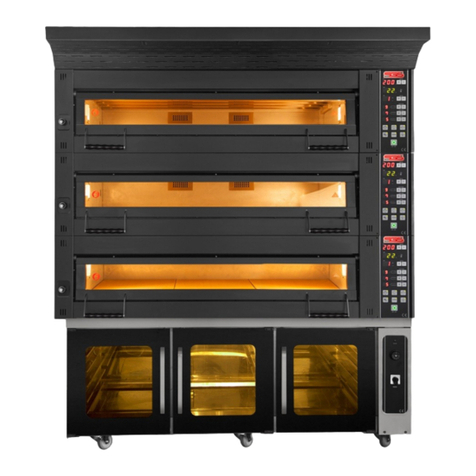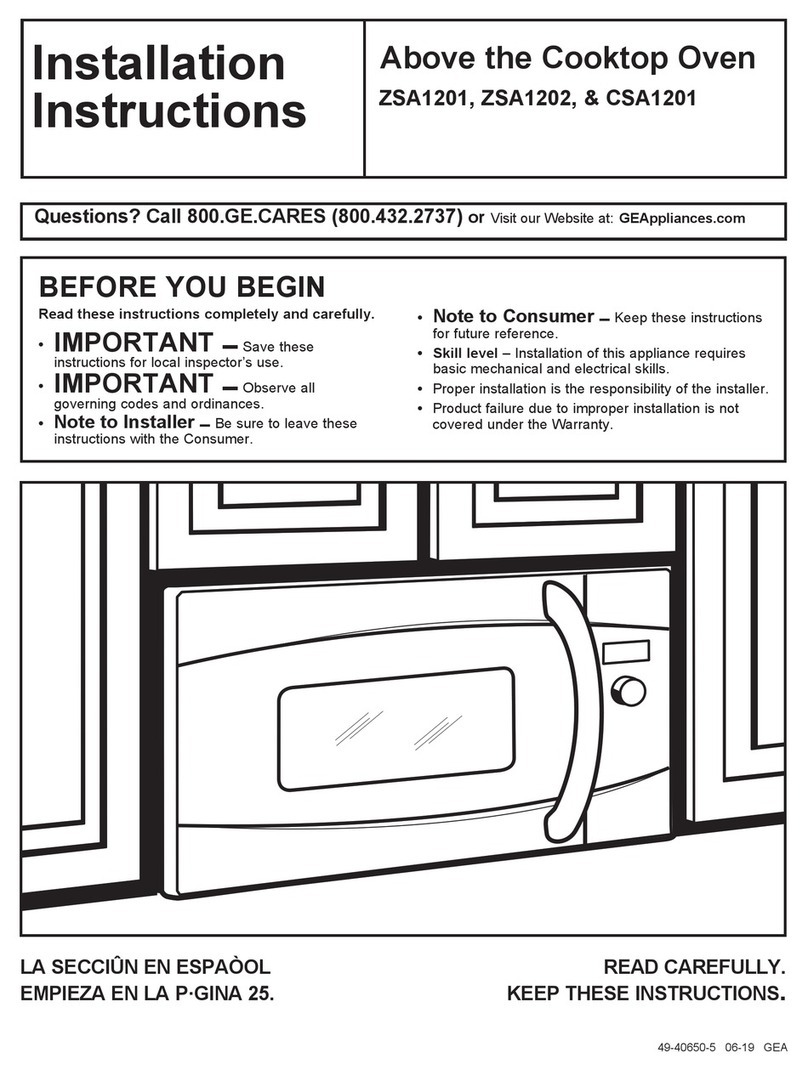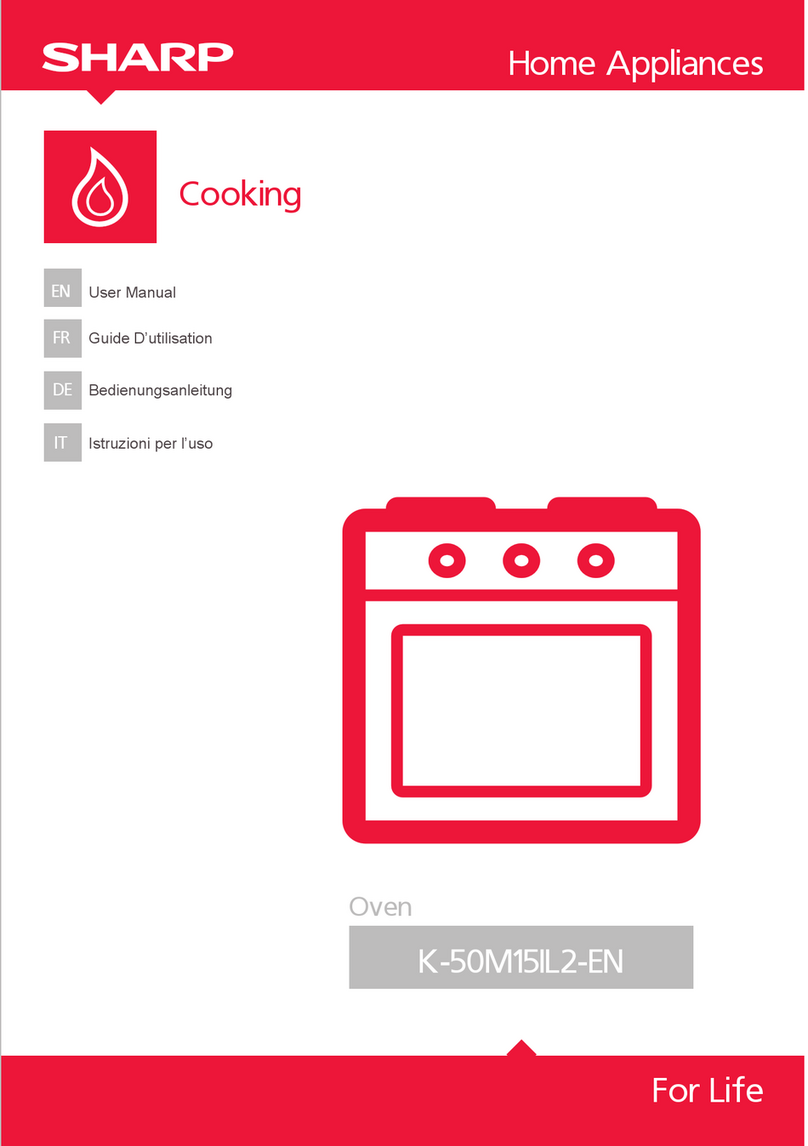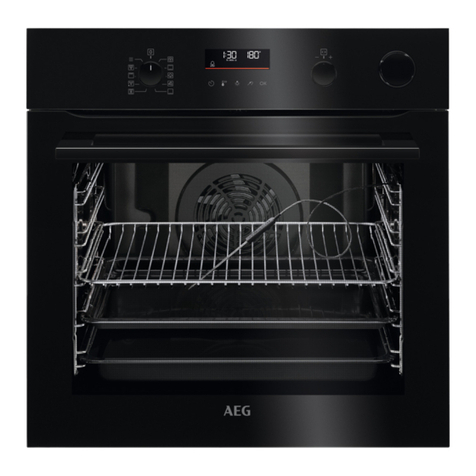Evenheat LB Installation instructions

Heat Treat Oven (LB, KO, KH & HT)
Installation & Operating Manual
March 2021
Page 1of 9
We know manuals are boring. This one is really no different. We like to tell ourselves our manuals are nothing short of the
most exciting thing you’ll ever read. But they’re not, they’re kinda boring.
HOWEVER………………we do ask that you at least read and understand the Safety and Set-up portions. This gets you up to
speed on how not to hurt yourself, other people or destroy your workshop. Truthfully, the rest of the manual has some cool
little gems that should make your learning curve even more enjoyable.
If you have any questions after reading this manual please contact us at [email protected] or 989-856-2281. We’re
more than happy to help.
Cautions & Safety
Warning Symbol Descriptions...................................................... 1
Emergency Stop Provision ........................................................... 2
Electrical Safety ........................................................................... 2
Oven Location Safety................................................................... 2
Oven Use Safety........................................................................... 3
Oven Maintenance Safety............................................................ 4
Intended Use.................................................................................... 4
Oven Set-up ..................................................................................... 4
Door Handle Installation and Use..................................................... 4
Power Interrupt Switch Connection................................................. 5
Temperature Controls ..................................................................... 5
Initial Use......................................................................................... 5
Loading the Oven............................................................................. 6
Setting Up and Running Your Heat Treat Program........................... 6
Entering the Chamber While Hot..................................................... 6
Periods on Non-Use......................................................................... 6
Useful Tips and Hints ....................................................................... 7
Relay Access Port............................................................................. 8
Warranty.......................................................................................... 9
Cautions & Safety
Heat Treat Ovens are as safe as any other electrical appliance when used under normal and proper operating conditions. To create and maintain this safe
environment observe all safety precautions.
Warning Symbol Descriptions
Warning symbols are used throughout this manual. These symbols alert the operator to certain hazards and important information. Pictured below
are symbols used along with a description of each.
Electric Shock Hazard
This symbol alerts you to
potential electric shock hazards.
General Cautions and Information
This symbol alerts you to particular
cautions, hazards and information.
Burn Hazard
This symbol alerts you to
potential burn hazards.

Heat Treat Oven (LB, KO, KH & HT)
Installation & Operating Manual
March 2021
Page 2of 9
Emergency Shut Off Provision
The ovens electrical power supply connection (plug/receptacle, breaker or disconnect) acts as the emergency electrical power shut off.
Access to these devises should be unobstructed and with safe access at all times. To remove power from the oven in an emergency situation
do so by pulling the power cord plug from the receptacle or by throwing the breaker or power disconnect to the off position.
All electrical installations for direct wired models (those without a plug/receptacle connection) must include a power disconnect near the oven and
that is easily accessible and with safe access for emergency power shutoff. To remove power from the oven in an emergency situation do so by
throwing the power disconnect to the off position.
Electrical Safety
A licensed electrician should be used for all electrical installation and service. All applicable local, state and federal electrical codes must be
followed.
Use correct voltage, wire size and fuse or breakers. Oven electrical requirements are located on the oven control panel nameplate and can also be
found on evenheat-kiln.com. Make sure all electrical connections are tight. Avoid using aluminum wire.
Always use the proper electrical receptacle. Never alter the ovens power cordset or power cordset plug. Alterations can be dangerous. Alterations will
void any warranties along with nullifying any Listing Agency markings such as U/L or TUV.
Evenheat recommends that a voltage check be performed before placing the oven into service, ideally before actual purchase. Operating
voltage varies, with common operating voltages being 240V and 208V. The ovens operating voltage (printed on the ovens nameplate) must
match the applied voltage (actual electrical service voltage). If it does not, do not install or operate the oven as potential electrical and fire
hazards exist. Contact Evenheat for guidance in such cases.
The oven must be properly grounded.
Unplug or disconnect the oven from the electrical service before accessing the chamber for servicing or vacuuming. Do not attempt to touch
or replace the heating elements while the oven is plugged in or connected to the electrical service. Electric shock may result in serious injury
or death.
Never, ever use an extension cord to operate an oven.
Oven Location Safety
Do not place or use oven on combustible surface.
Do not remove the metal stand attached to the oven by Evenheat Kiln, Inc.
The oven is designed to be positioned with the stand at the bottom and with the firing chamber resting on it. This positions the firing chamber at a
horizontal position with the door opening to the left. Do not place the oven on its back or in any other position than its intended position.
The oven should be permanently positioned –it should not be considered mobile.
The surface on which the oven is placed shall be capable of safely supporting the combined weight of the oven and oven load.
Observe all building, fire and safety codes when installing the oven.
Do not install the oven closer than 12” (31cm) from combustible wall surfaces or object or 36” from any ceiling surface. This includes with the door in
the opened and closed positions as well as along its travel path.
Install in a covered, well ventilated area. Do not place the oven in any structure resembling a carport or screened-in porch. Avoid areas that are
subject to outdoors weather.
Never place the oven in a small, enclosed area such as a closet, cabinet or very small room. The room in which the oven is placed into service shall be
capable of safely dissipating all heat produced by the oven.
Never install an oven outside. Avoid moisture.

Heat Treat Oven (LB, KO, KH & HT)
Installation & Operating Manual
March 2021
Page 3of 9
It is the user’s responsibility to be knowledgeable regarding any and all contaminants, produced by the ware during firing and take steps to properly
and legally contain and dispose of these contaminants.
It is the user’s responsibility to provide ventilation capable of removing all gases, fumes and other airborne contaminants produced by the ware
during firing safely from work the area and building structure.
Do not store flammable or combustible products near or in the same room as the oven such as gasoline, paint, aerosol cans, paper, curtains,
plastics, etc. Store these items in another separate structure designed for this purpose.
Position the power supply cables, power supply conduit, controller cables, pyrometer thermocouple leads and other kiln control or power
management items in such a way as not to create a tripping or tangling hazard.
The area around the oven should be free of obstructions that interfere with the proper and safe operation of the oven.
Never place anything under or above the oven for storage. Absolutely nothing should be propped against the oven.
Oven Use Safety
The surface of the oven is hot and burn injuries are possible. Keep all children and unsupervised personnel away. Always wear protective
clothing, gloves and eyewear when operating and handling a hot oven.
You must throw the oven’s power switch to the OFF position before accessing the oven chamber. Do not access the oven chamber if the
ovens power switch is at the ON position. Under no circumstances should you touch the heating elements with your body or any other
devises like tools or ware. Electrical shock may result in serious injury or death.
Use care when accessing or looking into a hot oven. High heat escapes quickly and burn injury may result. When accessing or looking into a
hot oven, approach slowly and wear protective clothing and gloves designed to withstand high heat and eyewear capable of filtering Infrared
and Ultraviolet light.
Protective clothing should be worn when operating the oven and includes, but is not limited to, cotton clothing, heat resistant gloves and eyewear
capable of filtering Infrared and Ultraviolet light.
Do not heat salts or cyanide. Gases produced are TOXIC. Serious injury or death my result.
Do not operate the oven over the maximum temperature rating printed on the nameplate.
Never fire an oven unattended beyond its anticipated firing time.
Do not operate the oven with the door open.
Never allow the power cord to touch the oven. If the power cord, plug or receptacle becomes damaged discontinue use and replace immediately.
It is recommended that a fire extinguisher, capable of dousing an electrical fire, be accessible in the event of fire. Smoke detectors within the oven
room are also recommended.
Keep the oven door closed when not in use.
It is the user’s responsibility to have knowledge of the material intended to be heat treated/fired. If you are unsure as to the safety of firing a
particular material contact your materials supplier for guidance before doing so. If you remain unsure as to the safety of firing a particular
material do not do it. Firing hazards include materials that explode or produce toxic gases. Finished ware hazards include materials
containing lead. Materials containing lead should not be used for articles intended for food use.
Fire all materials according to the material manufacturer’s instructions. Improper firing may result in damage to the oven or material.
Do not use the oven to prepare food, heat a living space, dry clothes or ice laden articles or use as a storage devise. The oven is designed for one
purpose and one purpose only: the heat treating of metals.
An oven will remain very hot long after the firing is complete. All safety recommendations should be followed, even with the oven unpowered, to
avoid any burn injuries. Keep children and other unauthorized personnel away.
When firing is complete, and during periods of non-use, remove power from the oven by unplugging or by throwing the disconnect or breakers to the
OFF position.

Heat Treat Oven (LB, KO, KH & HT)
Installation & Operating Manual
March 2021
Page 4of 9
Your oven may be equipped with a Power Interrupt Switch that is designed to automatically remove power from the heating elements when the door
is opened. Even with this added level of safety you must still turn the power off before accessing the firing chamber. No exceptions.
Oven Maintenance Safety
Disconnect electrical power from the oven before performing any oven maintenance. Failure to disconnect the electrical power supply may
result in electrical shock which can cause serious injury or death.
Replace any worn, damaged or defective parts immediately with Evenheat Kiln replacement parts only. Replacement parts can be found on
shopevenheat.com or by contacting Evenheat directly. Discontinue oven use until parts are replaced.
When vacuuming the oven use only HEPA filters on the vacuum. Prolonged expose to brick dust and other refractory materials can cause
lung injury.
Inspect all electrical service connections periodically for wear. Special attention shall be paid to the plug/receptacle if your oven is so equipped.
Periodically check chamber jacket clamps for tightness. Tighten as necessary.
Intended Use
Evenheat Knife/Heat Treat Ovens are a controlled heat source designed for the sole purpose of heat treating metals. Do not use the oven for anything
other than this intended purpose. It is the operator’s responsibility to determine the suitability and safety of any material to be heated or heat treated.
Many materials are unsafe to heat such as various salts and cyanide which emit toxic gases when heated. Please contact your materials supplier for
guidance in the materials response to elevated temperature, suitability and required safety precautions. If you are not completely sure as to the safety
of heating a particular material, don’t do it.
Oven Set-Up
There’s a great list of oven location information found above in the “Oven Location Safety”section. Read it and follow it!
Door Handle Installation and Operation
You’ll find a tapered door handle with your new oven. This handle must be Installed before
operating the oven.
Simply thread the handle onto the door latch rod and back the jam nut up to secure it.
Proper installation shown at right.
To close and latch the door for use: Close the door using the handle and continue to push forward
on the handle to insert the keyed handle stud into the keyed receiver attached to the oven and
rotate 90° to secure.
To open and unlatch the door: Push slightly on the door handle while rotating the handle 90°. Pull
the handle away from the oven to open.

Heat Treat Oven (LB, KO, KH & HT)
Installation & Operating Manual
March 2021
Page 5of 9
Power Interrupt Switch Connection
If your oven is equipped with a Power Interrupt Switch you’ll need to connect it.
Locate the power interrupt plug and insert it into the power interrupt jack located on the back of the control enclosure as shown below.
Temperature Controls
Our ovens are equipped with our Set-Pro, Rampmaster or TAP temperature controls. Separate operating instructions have been included with your
oven. These instructions can also be found on evenheat-kiln.com.
Initial Use
We recommend operating the oven empty before attempting any heat treating operations. This serves a few purposes: It allows you to become familiar
with the controls, it allows the elements to develop a protective oxide coating and it introduces you to accessing the chamber under high heat
conditions.
Make sure the oven chamber is empty, close the door and program and run your controls for a rate of 1500°/hour to 1500°F and hold for 10 minutes.
See the included controls operating instructions for details.
As the oven is heating you may notice a clicking sound along with an increasing chamber temperature, this will be true for mechanical relay
operated models. This continual clicking sound is the mechanical relay(s) turning on and off.
Models fitted with our Quiet Drive Solid State Relay(s) will not make any audible clicking sounds during the firing except for a single click at the
beginning of the firing.
Once the oven has reached temperature and finishes holding it will go to the Idle or Standby condition (depending on control). The control is no longer
running the program and is off. This would be a great time to access the oven chamber and learn what high temperature is going to look and feel like
during actual use. Before accessing the oven, throw the control power switch to the OFF position (0).
Before you access the chamber we need to go over some rules!! High heat will escape very quickly. Keep your body well
away from the chamber, particularly your face. We also recommend that you wear loose fitting cotton clothing, wear eye
protection capable of filtering Ultraviolet and Infrared light and tie all hair back. Always approach the chamber slowly.
Now stand back and open the door by extending your left hand to the door latch, rotate the latch and slowly open the oven door. Feel that rush of
heat? We weren’t kidding when we said it escapes quickly. This is the environment you will be working in.
During use the heating element(s) produce a naturally occurring, protective oxide coating. Their appearance will have gone from a shiny to dull look.
This is normal and welcome.
Feel free to operate the oven empty as much as you would like in order to become familiar with its operation. You won’t hurt a thing.

Heat Treat Oven (LB, KO, KH & HT)
Installation & Operating Manual
March 2021
Page 6of 9
Loading the Oven
Before loading material in the oven, throw the power switch to the OFF position. This is a question of safety. Contact with electrically charged
heating elements may result in serious injury or death.
Some users prefer to load their material in the oven cold while some prefer to load their material in the oven once it’s reached temperature. Regardless
of your chosen method, throw the power switch to the Off position before loading anything into the chamber.
We prefer loading the oven cold for a few reasons. Placement of your materials is much easier and more comfortable in a cold oven as opposed
to one that’s hot. We also tend to like the idea of the material coming up to temperature with the chamber.
For those heat treating knife blades: Blades should be placed in a blade fixture such as our MK1 and MK2 blade fixtures. These types of fixtures
hold the blades vertically. Vertical placement is necessary to bathe the blade in heat which helps to prevent warping. You can load the blade
fixture that is already placed in the oven or you may load the blade fixture on the bench and move it to the oven. We prefer placing the blade
fixture into the oven and then loading the blades. When placing the blade fixture into the oven attempt to center it from left to right.
When placing any material into the oven avoid making contact with the heating elements and thermocouple.
We recommend placing your material no closer than 1-1/2” from the heating elements.
Once the material is properly loaded and positioned close the oven door and latch it. You are now free to throw the power switch to the ON position
and perform your heat treating operation.
Setting Up and Running Your Heat Treat Program
Once your material is loaded and the oven door has been latched closed it’s now time to run the heat treating process. Your oven is supplied with the
Set-Pro, Rampmaster or TAP controls. A separate operators manual has been included with your oven describing the use of these controls. The
operators manuals for these controls can also be found on our web site evenheat-kiln.com.
The big question now is what temperatures and times do you use for your heat treat program. This information should be available from your materials
supplier. Other sources include the metal manufacturers published data as well as published books such as Knife Engineering by Dr. Larrin Thomas and
Metallurgy Fundamentals by Daniel A. Brandt. There’s always the internet as well.
Once you’ve determined your heat treat firing schedule, program it in and start your actual heat treating process.
Entering the Chamber While Hot
Generally speaking you will not enter the oven chamber while heat treating is in progress. You will, however, enter the oven chamber to retrieve your
material for quenching at the very end of the process. Be careful at this point as the chamber can be very hot (potentially up to 2400°F for KO models).
Before entering the oven throw the power switch to the OFF position. Contact with electrically charged heating elements may result in
serious injury or death.
Operate the latching action of the door handle and slowly open the oven door. Approach the oven slowly, high heat escapes quickly. Use tongs
or other suitable tool to remove the material for quenching.
Once all material is removed shut the oven door. This helps to retain heat in the fire brick for any subsequent heat treating processes. If you plan to
perform a tempering cycle feel free to keep the door open to bring the chamber temperature down. See our Useful Hits and Tips section for
information on tempering operation.
That’s it.
Periods of Non-Use
When you’re not using the heat treat oven throw the oven power switch to the OFF position. Keep the oven door latched and closed as well. You’re free
to leave your blade fixture in the oven at all times.
Don’t store anything on or around the oven.

Heat Treat Oven (LB, KO, KH & HT)
Installation & Operating Manual
March 2021
Page 7of 9
Useful Tips and Hints
Cooling Quickly
You won’t hurt the oven by cooling it quickly by opening the door when it’s red hot. No problem.
How Fast to Reach Temperature
Hardening:
For the hardening process a rate of temperature increase of as-fast-as-possible is generally accepted. This as-fast-as-possible rate is
programmed as a rate of 9999°/hour on our controls. The oven will slow itself naturally as it reaches these higher temps so overshooting the
temperature is really never a problem. Overshoot means blowing way past your set temperature. If you do overshoot then back off on the rates
to something like 1500°F/hour.
Notice that we say “generally accepted”. There are instances where a more controlled ramp-up to temperature is desired. Higher mass loads
generally require a slower approach to allow time for heat to find its way into the material.
Tempering:
When starting from a room temperature oven we suggest using a rate of 400F/hour up to your tempering temperature and letting the chamber
hold at temperature for an hour or more before tempering.
Cold firebrick acts much like a sponge in that it soaks up heat. Ultimately we’re looking to get the firebrick fully heat-soaked to
temperature and slower heat-up and hold period before use helps this.
When starting from a hot oven (as in just finishing a hardening cycle) feel free to leave the door open to bring the temperature down. You will
notice that when you close the door at your tempering temperature the chamber temperature will go back up. This is because the firebrick is
still releasing heat. The only way to really play this right is to get a feel on how far you’ll need to cool your oven so when you close the door it
bounces back to somewhere a little below your tempering target.
Hot firebrick acts much like a sponge in that it releases heat. Ultimately we’re looking to get the firebrick cooled to a point where the
release of heat won’t exceed your tempering temperature.
Cracking the door open slightly can also help with temperature control on a previously hot chamber. If your model is equipped with a
Power Interrupt Switch cracking the door may not be an option.
Typical Heat Treat Program
The typical heat treat process is a basic up to temperature, hold for a period of time and then shut off style of process. This type of used is
referred to as a 1 segment firing.
All of our controls allow you to program in multiple segments if you desire. This comes in handy for those who like to run a multi-step
normalizing sequence up to temperature.
Reduction Atmospheres
It is permissible to introduce the inert gases of Argon, Helium or Nitrogen into the heating chamber on KF, KH and LB Series Models.
We do not recommend using reduction atmospheres in KO Series Models as doing so will quickly degrade and destroy the heating elements.
Cold Climate Use (Bitter Cold)
Operating your oven in a very cold, unheated workshop may cause in issue with reaching high temperatures. We’ve seen instances where
ovens located in the Northern US and Canada have had difficulty reaching temperatures when room temperature is in the negative, double
digit °F zone. Not much you can do here other than to heat up your work space or wait for ambient temperature to rise.

Heat Treat Oven (LB, KO, KH & HT)
Installation & Operating Manual
March 2021
Page 8of 9
Thermocouple
The thermocouple is the temperature sensor and is located in the ceiling of the oven. The thermocouple is a rugged component that can take
some abuse but try to avoid hitting it if you can. The thermocouple works best if it’s not crowded against your work. Give it as much room as
practically possible. Avoid blocking the thermocouple from the sides, particularly both sides at once.
If thermocouple replacement is necessary replace only with a TYPE K thermocouple which is available from Evenheat. Replacing it with any
thermocouple type other than TYPE K will introduce an error into the temperature reading. So, TYPE K only.
Loud Alarm Output Jack –TAP & Rampmaster Equipped Models Only
If your knife oven is equipped with a TAP or Rampmaster control it is also equipped with an output jack intended for use with our Loud Alarm
option (serial numbers 107120 and greater). This output jack is located on the underside of the oven control panel. The Loud Alarm option is an
audible alarm capable of producing an 80db+ sound that cuts through a lot of shop noise. The alarm is designed to sound at the beginning of
the process temperature, and more importantly, at the end of the process temperature when quenching must occur.
The Loud Alarm output jack supplies a modulated 12Vdc, 300mA output.
Heating Elements
The heating elements we install in our knife ovens are made of special alloys that promote long life and element retention. Under normal
operating conditions you should easily get 10+ years of life. Normal operating conditions means you avoid getting debris on the elements, you
don’t go beyond the rated oven temperature and you don’t smoke up the chamber.
There is one maintenance issue that you can periodically perform on the elements/element grooves: vacuuming! Unplug the oven and carefully
vacuum the entire element groove. There’s no need to be rough just run the vacuum along the grooves. This helps to remove any loose debris
that may accumulate in the grooves.
Mechanical Control Relay Replacement via the Relay Access Port
The oven uses a device called a mechanical relay to control power to the heating elements, or in the case of a solid state model a mechanical relay is
used for the safety relay.
Mechanical relays used to power the heating elements directly are expected to fail and will need replacement at some point. We don’t expect the
mechanical relay used as a safety in the solid state design to ever really fail. Time will tell.
To make servicing (replacement) of the mechanical relay as simple as possible we’ve provided an external, relay access port. The relay access port
allows mechanical relay replacement by simply removing the access plate located on the outside back of the control enclosure. The Relay Access Port
plate is labelled as such and simply requires the use of a Phillips screwdriver to remove and expose the relay. Once the relay is exposed it’s very easy
to change. It is highly recommended that you use an Evenheat factory replacement mechanical relay #11801.200. Replacement with non-Evenheat
factory parts may result in improper operation.
Except for servicing, the relay access port plate must be secured to the control enclosure at all times. Do not operate the kiln without this Relay
Access Port Plate in place and properly secured to the control enclosure. Failure to do so may result in electric shock resulting in serious injury or
death.

Heat Treat Oven (LB, KO, KH & HT)
Installation & Operating Manual
March 2021
Page 9of 9
LIMITED KNIFE OVEN WARRANTY
Evenheat Kiln, Inc. guarantees to the original purchaser that for a period of two full years from the date of purchase the oven will be free of defects in
workmanship and materials when used under normal and proper operating conditions. Evenheat will replace or repair any defective part as specified
below.
FOR THE WARRANTY TO BE EFFECTIVE THE PURCHASE MUST:
Provide written proof of date of purchase. (Warranty card sent in at time of purchase serves this purpose well.)
Notify the Evenheat Distributor/Dealer from whom the oven was purchased, within 10 days after defect has been discovered.
Make oven immediately available for inspection.
FOR WARRANTY REPAIRS:
Warranty repairs should be handled through the Distributor/Dealer from whom the oven was purchased, who will arrange for any repairs or
replacement of parts under the terms of this warranty upon receipt of the oven (or defective part). Otherwise the defective part may be returned
(postage prepaid) to Evenheat Kiln, Inc. P.O. Box 300 6949 Legion Drive Caseville, MI 48725. If, after factory examination, the original part is found to
be defective, a new or repaired part will be shipped prepaid by Evenheat Kiln, Inc.
If the entire oven is to be returned to the factory, all transportation costs will be borne but he purchaser. The purchaser should notify Evenheat Kiln,
Inc. (989) 856-2281 prior to shipping. Evenheat will help advise the best shipping method and if it is necessary to return the entire oven or only certain
parts. Warranty work will be performed within 30 days after defective part is returned to the factory.
Evenheat Kiln, Inc. reserves the right, at its option, to replace the entire oven or any part of it in order to fulfill its obligation under this warranty.
THIS WARRANTY DOES NOT COVER:
Freight damage, ovens altered in any way, abuse or neglect, moisture, improper storage or installation.
Ovens over fired (reaching temperature higher than melting point of ware inside oven) regardless of cause.
Ovens operated on incorrect voltage.
Improper electrical installation.
Knife Blade furniture or ware other than Evenheat made.
Ovens used for salt firing.
Ovens used for purposes other than the firing of heat treating various metals.
Ovens operated in excess of the temperature on the rating plate.
Damage to Property or personal injury that may occur from ovens that are fired on or near wood floors or combustibles.
Damage to property or personal injury that may occur from improper ventilation of the work area and building structure.
This warranty is in lieu of all other warranties, expressed, or implied.
Evenheat Kiln, Inc. neither assumes nor authorizes any Distributor/Dealer, Retailer or employee to assume for it any other obligations or liabilities in
connection with Evenheat Kilns.
This warranty is limited as specified above and excludes incidental or consequential damages. Some states or providences do not allow the exclusion or
limitation of incidental or consequential damages, so the above limitations or exclusions may not apply to you.
This manual suits for next models
3
Table of contents
Other Evenheat Oven manuals
